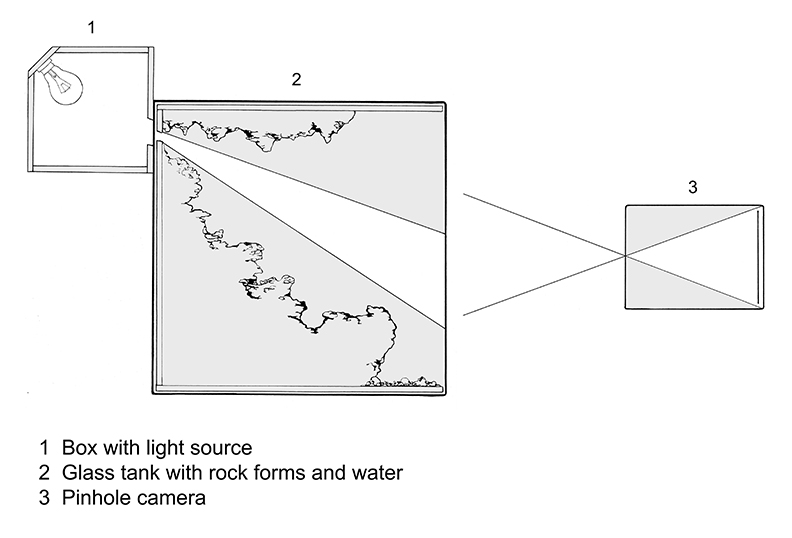Above & Below
Info
The eye and the camera both developed from simpler, more primitive forms of vision. The pinhole camera and the eye of the chambered nautilus are such antecedent forms. The nautilus' eye, unchanged after millions of years, is nothing more than a hole in its body. No lens or cornea defines or shapes the images it receives. Similarly, a pinhole camera creates images on a photosensitive interior surface by light admitted through a simple pin-size hole in the camera body. The photographs in this series are my attempt to create and reveal such ancient visions.
The world this series imagines is of starkly but gently illumined underwater caves: dark, lifeless, rock-formed chambers revealed by single rays or sources of light. These are spaces imagined as existing long before any life forms appeared and as they may well remain long after life has vanished, a primordial landscape for the play of light and darkness.
I produced these images by casting and arranging rocks into cave-like formations, submerging them in a large water-filled glass tank, lighting these aqueous dioramas from a single light-source and then photographing them with exposures ranging from twenty-four hours to several days using a pinhole camera in an otherwise darkened room.
The resulting images are formations much like the nautilus' eye and pinhole camera: light entering through a simple open hole into an otherwise dark space. This series, then, illustrates and explores the reciprocal relationship between a subject and the means of apprehending or recording it, the ancient dialog between what is above and below, between darkness and light.
